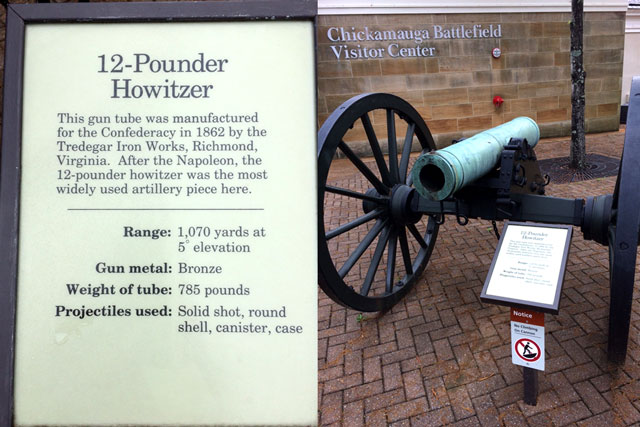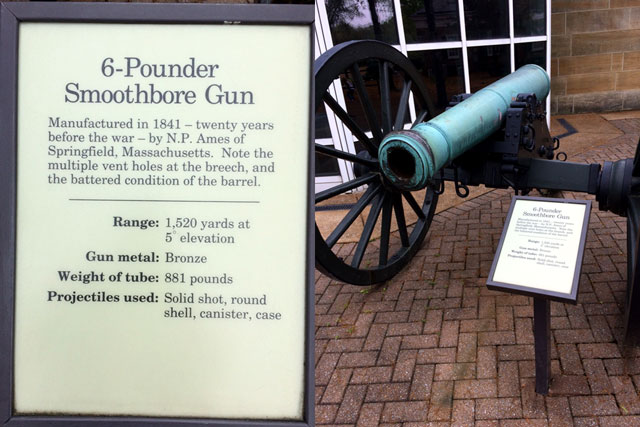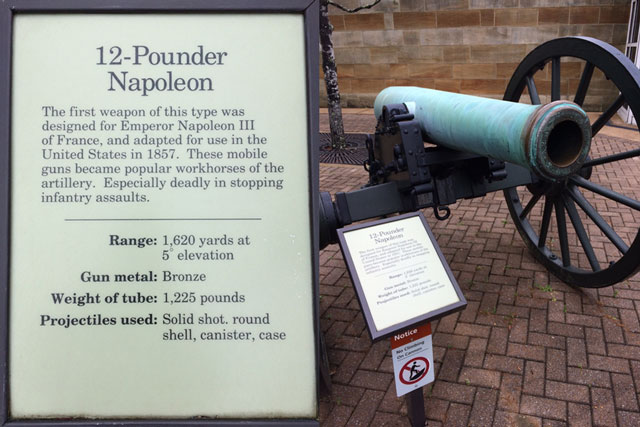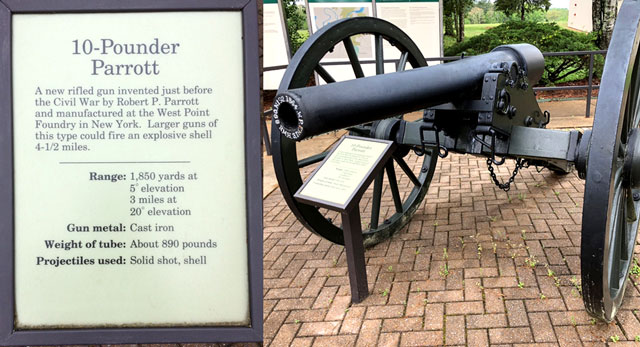I recently had a chance to visit the Chickamauga and Chattanooga National Military Park. While there, I was particularly impressed by the artillery display located at the entrance of Chickamauga Battlefield National Park Service visitors’ center. What I found of note in this display, not only did they have all six of the most used western theater cannons, they also incorporated information relevant to each gun.

Model 1841, 12-pounder Howitzer

3-inch Ordnance Rifle

Model 1841, 6-pound Gun

12-pound James Rifle (Type 1)

Model 1857, Light 12-pounder Gun-Howitzer (Napoleon)

10-pound Parrott Rifle
The Western Theater during the civil war seems to have been at the end of the artillery supply chain. It received what no one else wanted. As such, its armies hung onto and made use of the 6-pound smooth bore and the 12-pound James Rifle much longer than the Eastern Theater. Better to use what you had than to go without. In the Eastern Theater following the battle at Antietam, General Lee requested that the 6-pounders be turned into Ordinance to be melted down into the 12-pound Napoleon. This was due to the range and strength of the Napoleon over the 6-pound smooth bore gun.
The James Rifle was born in part out of the desire on the part of the military to quickly enter the rifled gun era. Named after inventor and militia general Charles T. James, who worked with the Ames Manufacturing Company until his untimely death in October 1862. There were several models or types of James rifles. Most of these were cast in bronze and fired the James projectile. The Type 1’s were rebored 6-pounders with rifling. The challenge with rifling bronze is the rapid wear on the rifling soon led to inaccuracy of the piece and loss of power, hence range. The James projectile fell out of favor and was replaced by the Hotchkiss projectile. I suggest reading an excellent piece by Craig Swain, a fellow blogger, which provides information on the James rifle (chick here).
I purposely placed the photos of the 6-pound gun, the James Rifle and the 12-pound gun adjacent to each other to allow you to flip between the images. As you visually compare these three bronze guns remember that the James Type 1 began its life as a Model 1841 6-pound gun. The 6-pound gun was replaced by the Model 1857 12-pound gun/howitzer, commonly called the Napoleon.
Previous blogs on civil war artillery can be found: Civil War Artillery, Confederate Artillery Dominance.

Peter, an interesting post and of interest as in a few months I’m heading out for three weeks to visit western battlefields. Starting and ending in Nashville though visiting battlefields from Kentucky to Stones River via Vicksburg. Any suggestions for Chickamauga? Your advice was so useful at Fredericksburg.
LikeLike